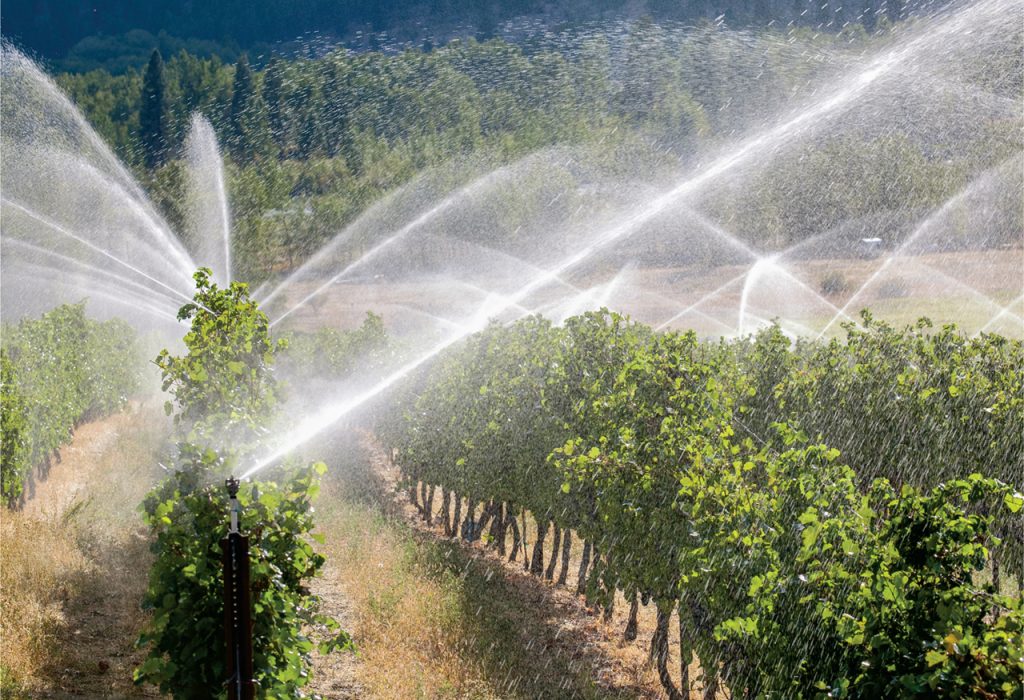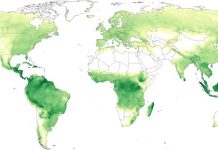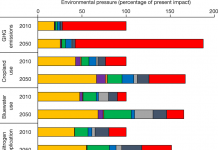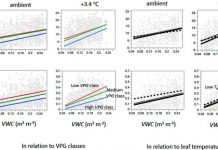【当灌溉效率增加时,用水也随之增加】R. Q. Grafton 等. The paradox of irrigation efficiency. Science, Vol. 361, Issue 6404, pp. 748-750 DOI: 10.1126/science.aat9314
(来源:EurekAlert!) 提高灌溉效率(IE)并不一定会带来农业耗水的减少,这一悖论基本上被寻求调和高用水量与有限供水间矛盾的公共政策所忽略。在本期的《政策论坛》中,Quentin Grafton和同事就“灌溉效率的悖论”进行了讨论,评估了继续对更有效地灌溉农作物的措施增加补助所需的公共成本。农业灌溉占了世界某些地方用水量的70%,它促进了农作物的发展,为全球粮食供应做出了重大贡献。然而,水属于有限的资源;为在水需求的日益增加(尤其是在干旱地区)与维持农业生产的措施间取得平衡令许多政府拨出相当多的资金来支持旨在提高灌溉效率的政策。这样做的希望是,‘省下’的水可重新流入其它板块,如城市、工业或环境。但模型提示,这种理念的真实性缺乏实证支持。Grafton和同事提出,提高灌溉效率甚至可能会同时增加种植用水和地下水的抽取。在灌溉效率较低的系统中,任何没有直接用于灌溉农作物的水(如径流等)会被回收,它们会流入地表的水系统或地下含水层。然而,据作者披露,随着灌溉效率的增加,‘流失’的水变少,这意味着重新进入水系统的水量变少,这会导致可用水总量的下降。Grafton等人提出,如果增加IE是延缓全球水危机所需的,那么需要在用水上取得某些研究进展。它们包括:综合性实体水的核算与检测、对不确定性进行评估、对竞争使用、利益相关方的激励及对减少用于灌溉的地下水抽取总量间的得失进行评估等。
【利用火山爆发估算地球工程的全球农业效应】Jonathan Proctor 等. Estimating global agricultural effects of geoengineering using volcanic eruptions. Nature 560: 480-483
Abstract
Solar radiation management is increasingly considered to be an option for managing global temperatures1,2, yet the economic effects of ameliorating climatic changes by scattering sunlight back to space remain largely unknown3. Although solar radiation management may increase crop yields by reducing heat stress4, the effects of concomitant changes in available sunlight have never been empirically estimated. Here we use the volcanic eruptions that inspired modern solar radiation management proposals as natural experiments to provide the first estimates, to our knowledge, of how the stratospheric sulfate aerosols created by the eruptions of El Chichón and Mount Pinatubo altered the quantity and quality of global sunlight, and how these changes in sunlight affected global crop yields. We find that the sunlight-mediated effect of stratospheric sulfate aerosols on yields is negative for both C4 (maize) and C3 (soy, rice and wheat) crops. Applying our yield model to a solar radiation management scenario based on stratospheric sulfate aerosols, we find that projected mid-twenty-first century damages due to scattering sunlight caused by solar radiation management are roughly equal in magnitude to benefits from cooling. This suggests that solar radiation management—if deployed using stratospheric sulfate aerosols similar to those emitted by the volcanic eruptions it seeks to mimic—would, on net, attenuate little of the global agricultural damage from climate change. Our approach could be extended to study the effects of solar radiation management on other global systems, such as human health or ecosystem function.









